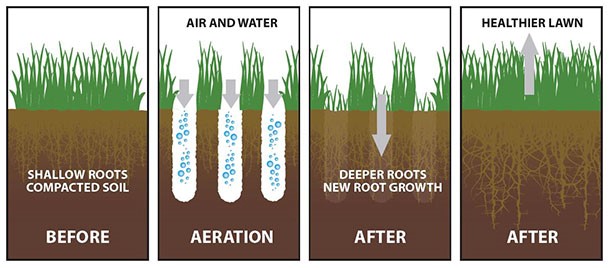Kentucky Bluegrass: How to Plant/Grow and When to Plant
Whether you live in the north of the country, or one of the Southern transition states, Kentucky bluegrass is one of the most common turfgrass for lawns. It’s the ideal cool-season grass for erosion control, it displays a hardy profile against drier summer climates, and its long, bluish-green hue makes it the perfect choice for beautification.
The best part about Kentucky bluegrass cultivars is that they’re easy to plant, grow, and manage. If you follow the specific planting, mowing, and fertilizing guidelines for Kentucky bluegrass, you’re sure to have a thriving, attractive lawn.
What is Kentucky Bluegrass?
Hearty and highly palatable to homeowners and livestock alike, Kentucky bluegrass has a variety of uses. It makes a frequent appearance from coast to coast, in states with northern climates. Warm summers and cold winters work best with its natural growth cycle.
For best results, keep in mind these following seeding and growth characteristics for Kentucky bluegrass:
- Plant at a depth of one-fourth to half-an-inch
- Seed at a rate of three pounds per every 1,000 square feet and half that if you’re overseeding
- Plan to fertilize in the months of September, November, and May (this variety typically requires more fertilizer than tall fescue types)
- The optimal soil pH for Kentucky bluegrass cultivation is 6.0 to 7.0
Traditional Kentucky bluegrass thrives in full sun, but it does perform moderately well in partially shaded areas. Sprouted blades of Kentucky bluegrass are a lush, dark emerald green that has an almost blue hue to it.
The fine texture of Kentucky bluegrass makes it a joy to sit on and enjoy a picnic. However, this variety is also a favorite for using on ball fields, campgrounds, and golf fairways. Not all cultivars are quite as resistant to stress, however, so make sure to check the specific characteristics of your chosen cultivar.
When is the Best Time to Plant Kentucky Bluegrass?
The best time to plant is in the fall, although spring is also a good time; this is why this grass type is classified as a cool-season grass.
How to Prepare Your Soil for Kentucky Bluegrass
Taking some time and effort to improve your soil before seeding a bluegrass lawn will reduce water usage and save you money in the future.
- Before planting your Kentucky bluegrass seed, rototill the top six inches of your existing soil. This adds oxygen and breakups any compacted areas that restrict water absorption and root growth.
- Till in organic matter such as black topsoil, compost, shredded yard waste (leaves, grass clippings, etc.) or an organic matter-based, slow-release fertilizer.
- Add any additional soil amendments as suggested by your local county extension agent. Your local agent may recommend you get your soil analyzed first. Follow their instructions on where and how to have your soil tested.
How to Plant Kentucky Bluegrass
Successful lawns need some deliberate reverse-engineering from you. In the case of cool-season grasses like Kentucky bluegrass, your work calls for a regiment of fall preparation for lush springtime germination.
- Begin by aerating your lawn. Poke the soil to create small holes that allow air, water, and nutrients to reach the grass’s roots. Depending on the growth rate and age of your lawn, you may have to dethatch first.
- Seed and overseed. Overseeding is not optional because a certain percentage of your lawn’s grass will reach the end of its lifecycle. So even if you don’t have bare patches, use a broadcast spreader or a slice seeder to seed the lawn. This is also a smart way to crowd out weeds naturally.
- Finally, follow it all up with some much-needed fertilizer. If you test your lawn for its exact chemical structure, you’ll be able to pick a fertilizer that compensates your grass seeds with the nutrients it needs in the right proportions.

Initial Seeding
To establish Kentucky bluegrass seeds, prepare a firm, smooth seedbed and buy high-quality seed. Kentucky bluegrass likes well-drained soil. If you do have disturbed areas, use soil amendments to fortify the seedbed. Once you aerate and seed, cover with soil no deeper than one-fourth to one-half of an inch.
You need to maintain the moisture in your soil for successful germination, so make sure to irrigate up to 16 inches. Germination time takes anywhere between 21 to 28 days. Once blades of grass appear and begin growing in the spring, you want to water one to two-and-a-half inches weekly.
How to Grow Kentucky Bluegrass
During the active growth period, Kentucky bluegrass will thrive with fertilizer that has anywhere from four to six pounds of nitrogen per 1,000 square feet. Apply organic matter such as rotted manure or compost tilled to eight to ten inches to improve soil structure and fertility.
Different types of grasses thrive at various heights. Kentucky bluegrass, for example, works best when mowed to a height of one-and-a-half to two-and-a-half inches.
Set your first few mowings at a lower setting with a sharpened blade. This allows sun, water, and nutrients to continue penetrating the base of your grass and stops the tips from turning dull and brown.
From there, raise your mower height every one to two weeks until it hits about two-and-a-half to three inches. This added height will protect the root system from the sun. In case you experience a hot or dry summer, this will also help retain moisture. That’s useful for Kentucky bluegrass, which does have a tendency to turn brown and patchy in arid heat.



